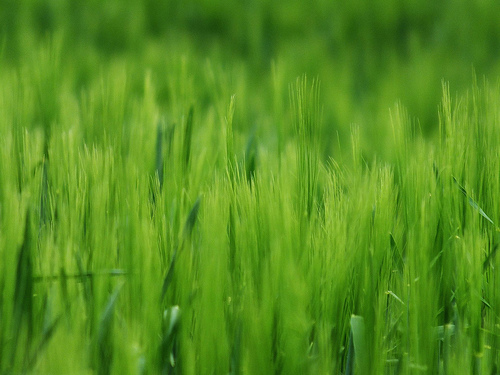50% Off First Application¹
Call 1-855-940-1479
and connect with a TruGreen consultant
A Green Lawn is a Healthy Lawn
You’ll find a lot of differences in American homes, but in the lawns of these houses you’ll find that most homeowners have similar goals. A healthy, green lawn is at the top of every homeowner’s wish list for their yard. Simple mowing and irrigation may seem like enough to keep your lawn healthy, but there are more steps than this that a lot of people overlook.
Green lawns are healthy lawns, but healthy lawns do not always have the vibrant green hue that you’re used to. In most parts of the country, grass enters a dormant state when winter arrives. During this dormancy it is common for lawns to dry up and become brown. This does not mean that you’ve failed to provide your lawn with the best care possible, it just means that the conditions in your area are too harsh for year-round vibrancy.
Even though you may not be able to keep your lawn green all year long, there are several steps that you can take to ensure that your grass stays as healthy as possible. Fertilization, mindful irrigation and regular lawn maintenance are all essential if you plan on reaching the health goals for your yard.

Regular fertilization
Fertilizer is the food that your lawn eats, and if it stays hungry for too long it will begin to fail. Adding fertilizer is a great way to give your lawn the boost it needs, but if done incorrectly or at the wrong time you may not see the desired effects. Take your time to research the fertilization methods and type of treatments that your lawn will best respond to.
Like many lawn treatments, fertilization works best in lawns where proper maintenance has been taken care of. Always clear your yard of debris before attempting fertilization. You should also check the pH balance of your soil (using a pH test kit) before applying any lawn treatments, the results of this test will indicate whether or not fertilization is necessary as well as the recommended type of fertilizer.
Proper irrigation is key
If you aren’t providing your lawn with the proper amount of water, it has no chance at staying healthy and green. There is a fine line between under and over watering your lawn, and the exact amount of water that’s required depends on many factors. These factors include the type of grass seed that was planted in your lawn and the type of soil in your area.
Rainfall contributes to your lawn’s irrigation, and in parts of the country that see a lot of precipitation it may not necessary to manually water your lawn at all. Keep a close eye on rainfall totals so that you are aware of when you need to hold off or increase manual watering habits.
Don’t forget about regular maintenance
Regular maintenance, like mowing and raking, makes a big difference in your lawn. Grass that isn’t mowed frequently suffers from all sorts of problems, making it impossible to keep a green lawn. Problems like pests, weeds and thatching can all be eliminated with simple maintenance.
If a high-maintenance variety of grass was planted in your lawn you may not be able to find the time in your schedule for the required work. In cases like this it is a good idea to outsource your lawn maintenance to a landscaping company, or at least have a lawn care provider take care of pest, weed, and health management. Small steps make a big difference in keeping grass green. Lawns all over the country have the ability to stay healthy and strong, and with regular maintenance this is attainable for any

TruGreen will gladly visit your property as often as needed between scheduled visits to make any necessary adjustments and to ensure your satisfaction.
Getting Started with TruGreen
- Call or fill out the form above to reach a lawn care specialist.
- Know the square footage of your yard, as well as any specific areas of concern.
- With the help of your specialist, create a customized lawn care plan that meets your lawn’s needs.
- Schedule your Healthy Lawn Analysis2 to start your service.
